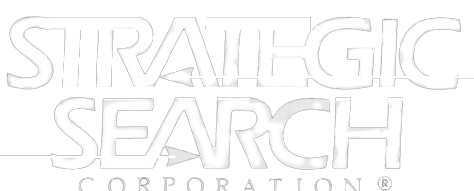Recently, I have been bombarded by requests by friends, family and clients to help them find a job. Unfortunately, there is no secret to landing a job especially with this terrible economy with the real unemployment (including those who are involuntarily working part time because they cannot find a full time job and those that have given up looking) at about 16% or 1 in 6 workers! However, I do recommend being very diligent and using a three-pronged approach including:
- Developing a quantitatively laced resume.
- Selectively using recruiters
- Networking, which is the most important of the three!
Let’s take these from least important to most important. First, having a resume is a necessary evil. Most companies (especially human resources) require it. Therefore, you should mold your resume into a quantitative one. Please go to http://www.strategicsearch.com/interview-preparation-tips/interview-preparation-tips.php and review my 1st Commandment of Interviewing. The key is the mantra: numbers, numbers, numbers. As a rule of thumb, when you put some wording in your resume, ask yourself the questions: a) “so what?” or b) “what does this mean to an employer?” or c) “what is the benefit of this to an employer?” Then add one of the following (or some variation) sales bridges to what you say:
- The benefit of (whatever you wish to say) was (e.g. a 40% increase in sales or $560,000 profit etc.).
- That was important because (tell the benefit in quantitative terms).
- The result of (whatever you mentioned) was (mold the result into dollars or profit or percentage change).
You should not lie on any of these “numbers”, but you can error on the high side. Remember that your resume is an advertisement about you! It is not an encyclopedia of your entire life. It is only meant to quickly share your highlights. For example, if you think you saved your employer somewhere between $10,000 and $45,000 with a new computer control system you selected, then say, “the result of the new computer control system was about $45,000.” Once again, the key is to seed your resume with: numbers, numbers, numbers! Also, try and keep it concise (e.g. no more than two pages). However, do not spend too much time, effort or money on developing a resume, because as my 2nd Commandment of Interviewing says, “Resumes don’t get you hired, you do!”
Second is the selection and use of recruiters. I recommend using recruiters who place both full time and temporary positions. To access full time recruiters, I recommend getting a copy of The Directory of Executive and Professional Recruiters. Please go to http://www.recruiterredbook.com to learn more. It is available at most libraries. It divides recruiters into two main categories: a) retained and b) contingency. Retained recruiters, like myself, work mainly for the company to find talent. Contingency recruiters only receive their fee when they place someone. It also further divides each group into their specialty areas.
I also recommend using temporary (also called contract or staffing) agencies. This is an often-overlooked tool. Please review my 9th Commandment of Interviewing for more details. The key is one of the trends today is towards temp-to-perm conversions. This means companies hiring you on a temporary basis, trying you out and then hiring you full time after you have proven yourself. Unfortunately, many people think temporary positions are beneath them. However, if you overlook this avenue you may loose out on a tremendous job! Please go to http://www.americanstaffing.net/jobseekers/find_company.cfm to view and select several temporary agencies.
I recommend selecting 1-2 retained recruiters, 4-6 contingency recruiters and 4-6 temporary or staffing agencies within your areas of expertise. The reasons are: a) contingency recruiters and temporary or staffing agencies will probably work harder for you since they will only get paid if they place you b) temporary or staffing agencies may know of a few good assignments that will lead to full time work c) temporary agencies can probably find you more immediate income (and you can continue your job search with a pay check coming in) and d) it helps to also add a few retained recruiters because they have access to higher level jobs. There is no magic formula to selecting recruiters. Instead, you should follow several steps:
- Review The Directory of Executive and Professional Recruiters find: a) 5-6 retained recruiters and b) 10-15 contingency recruiters in your specialty areas.
- Review the database of temporary or staffing agencies and find 5-10 that seem to meet your needs.
- Develop a list of questions to ask these recruiters (e.g. how many searches have you done in the last two years in my area of expertise).
- Call these recruiters and narrow it down to: a) 1-2 retained recruiters b) 4-6 contingency recruiters and c) 2-4 temporary or staffing agencies that you feel comfortable with. Some may ask you for an exclusive. I would tell them they have an exclusive, but do not sign anything. You do not want to narrow your possibilities!
- DO NOT RELY UPON ANY OF THEM! They will all help to some extent, but your main way to help yourself is networking (below).
The third and most important part of my recommendations is networking. There are two types of networking: a) the old fashioned form of meeting people and b) e-networking. Please refer to my 2nd and 3rd Commandments of Interviewing for more information. However, one of the cornerstones of any networking approach is developing a 20-30 second elevator pitch. During this pitch you want to quickly convey three things:
- Who you are?
- What you are looking for (be specific)?
- Your 2-3 greatest strengths.
To develop this pitch, I recommend following these three steps:
- Write down on paper your most pertinent information.
- Work and rework this information until you have a very concise document that fits into 2-3 paragraphs.
- Practice pitching this document aloud to yourself into either: a) a tape recorder or b) the mirror at least 50 times until you feel it is very concise, “rolls off your tongue” and conveys everything you wish to convey. Also time yourself and do not take any longer than 30 seconds to complete your pitch!
Once you have a pitch that you feel comfortable with, you want to practice it on everyone you meet and know. Also, use the written version of this on social media sites like LinkedIn. Join appropriate business groups and meet people. When you meet someone new, don’t forget to share your 30-second elevator pitch because you don’t know who might know about your next job.
Remember, there is no secret to landing a job especially in this terrible work environment. You have to be very diligent. However, remember that networking is the key and as part of that, you need to develop a very strong, 30-second elevator pitch. I hope this helps.



